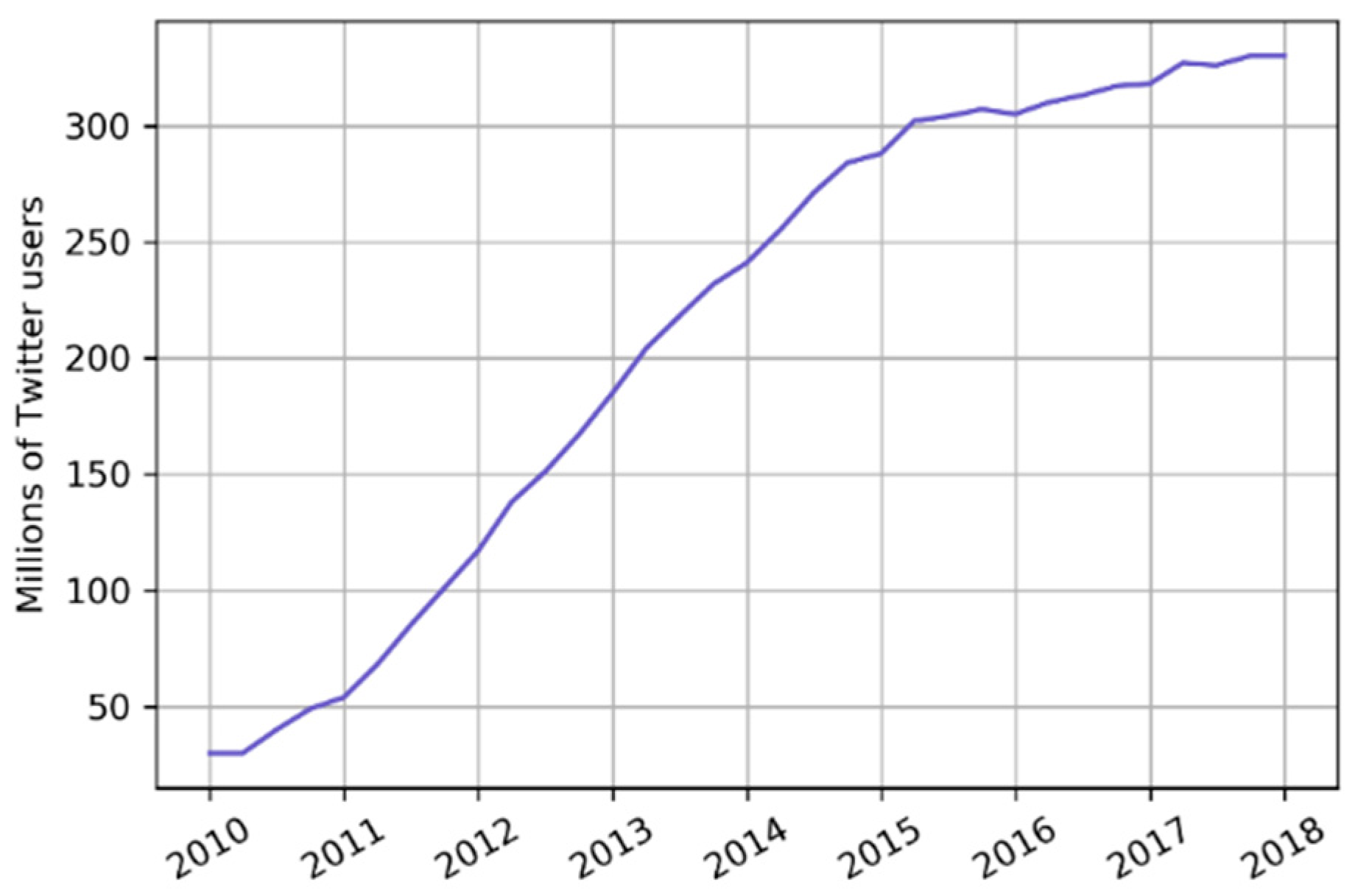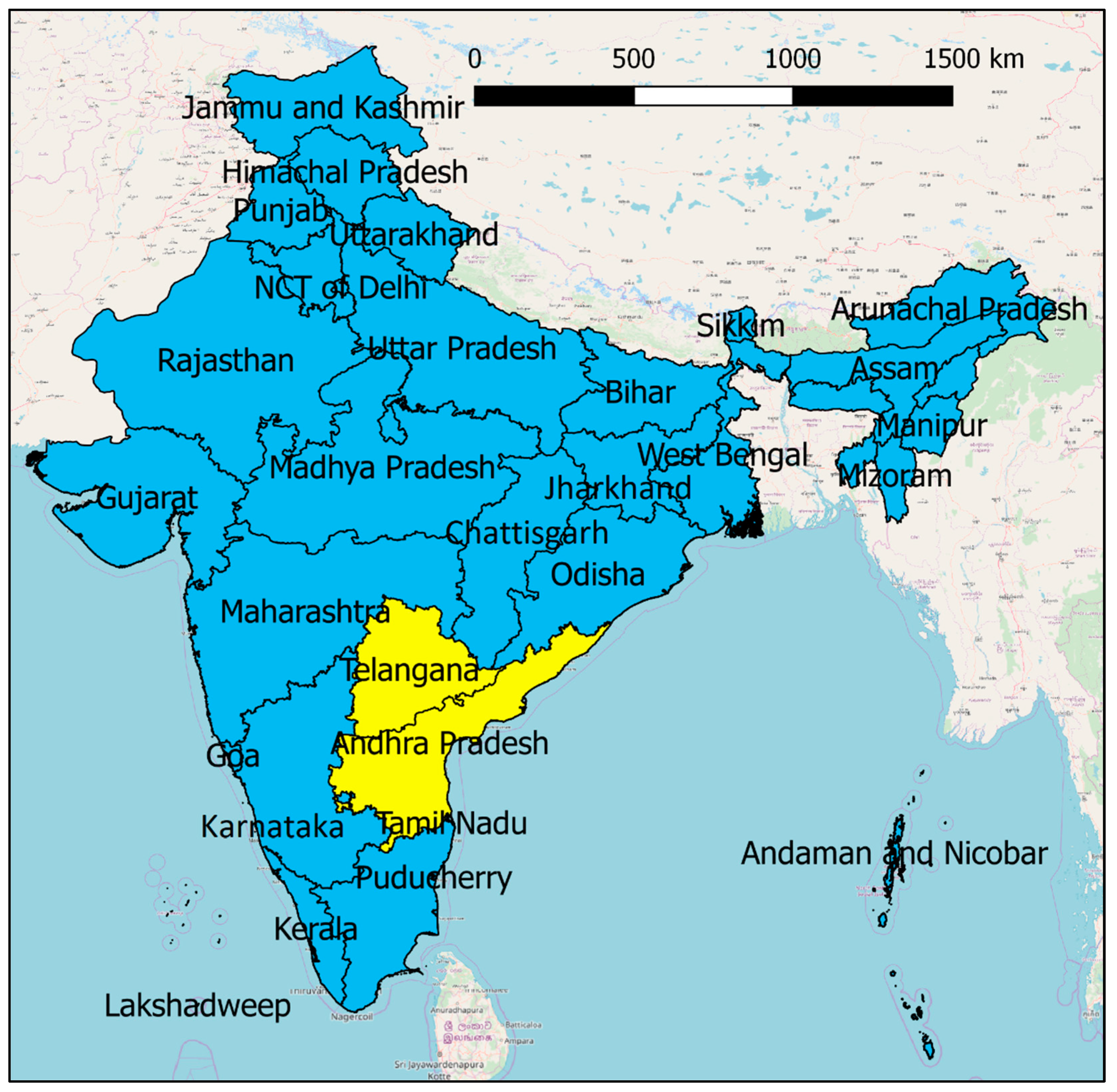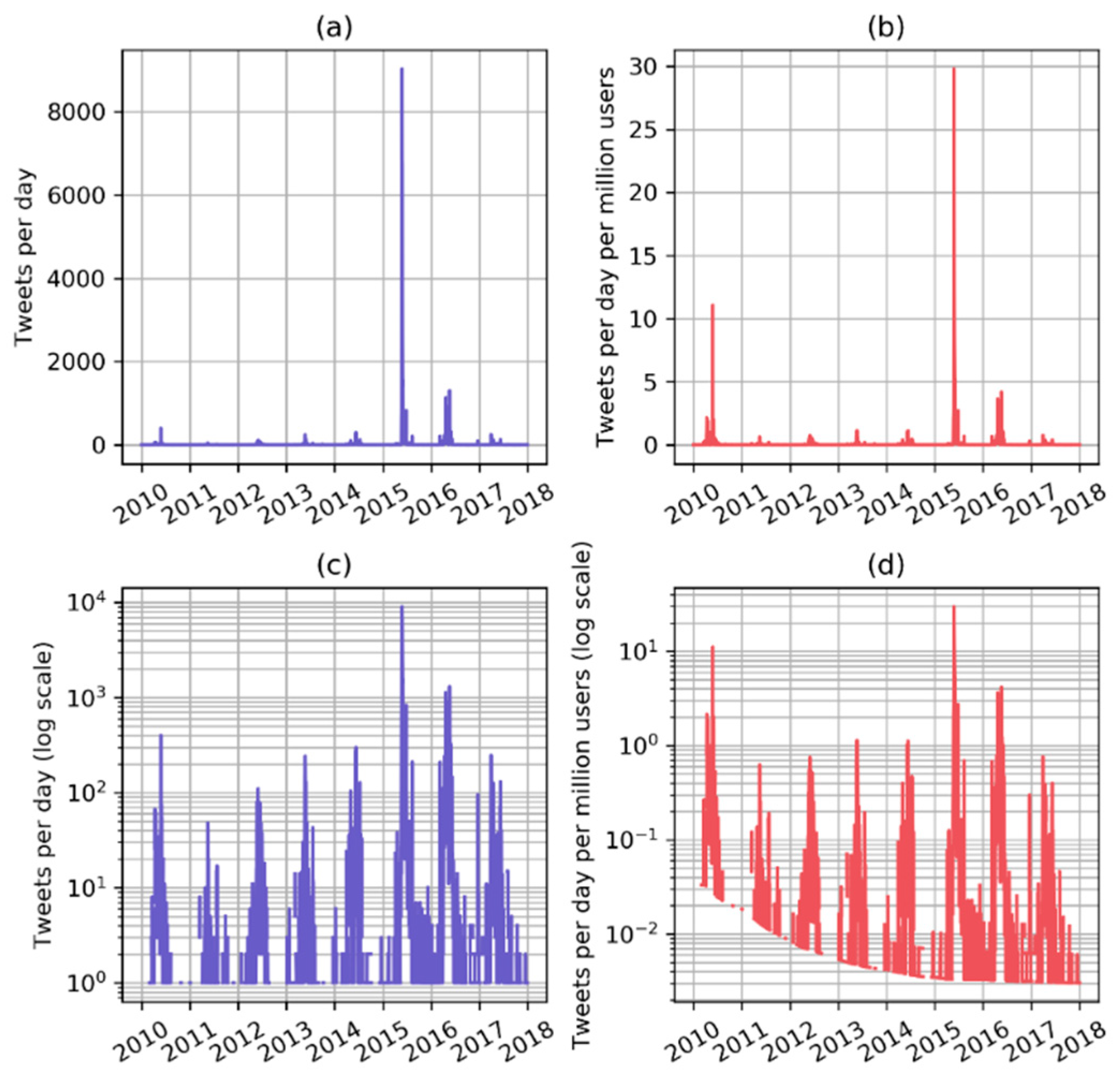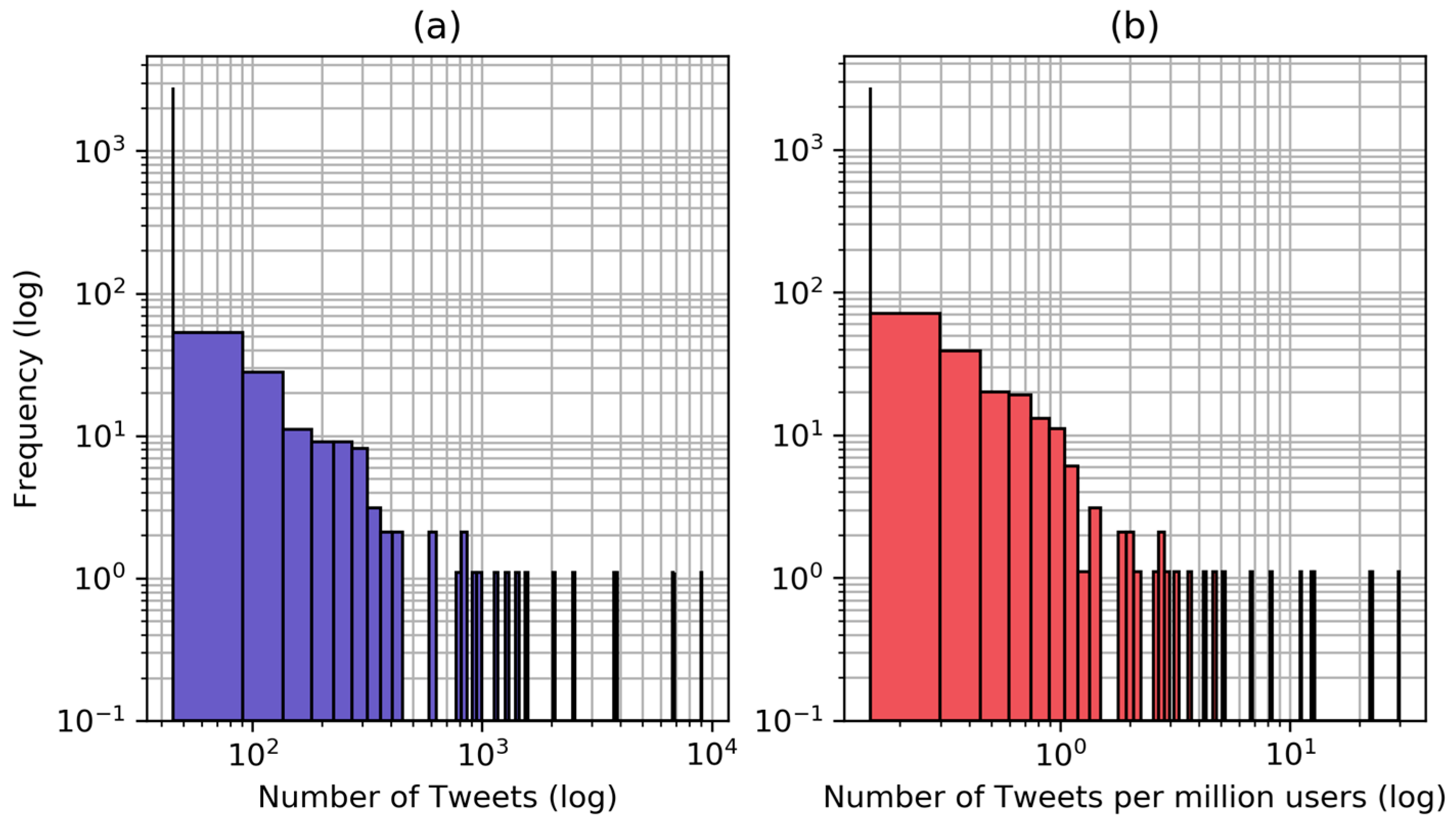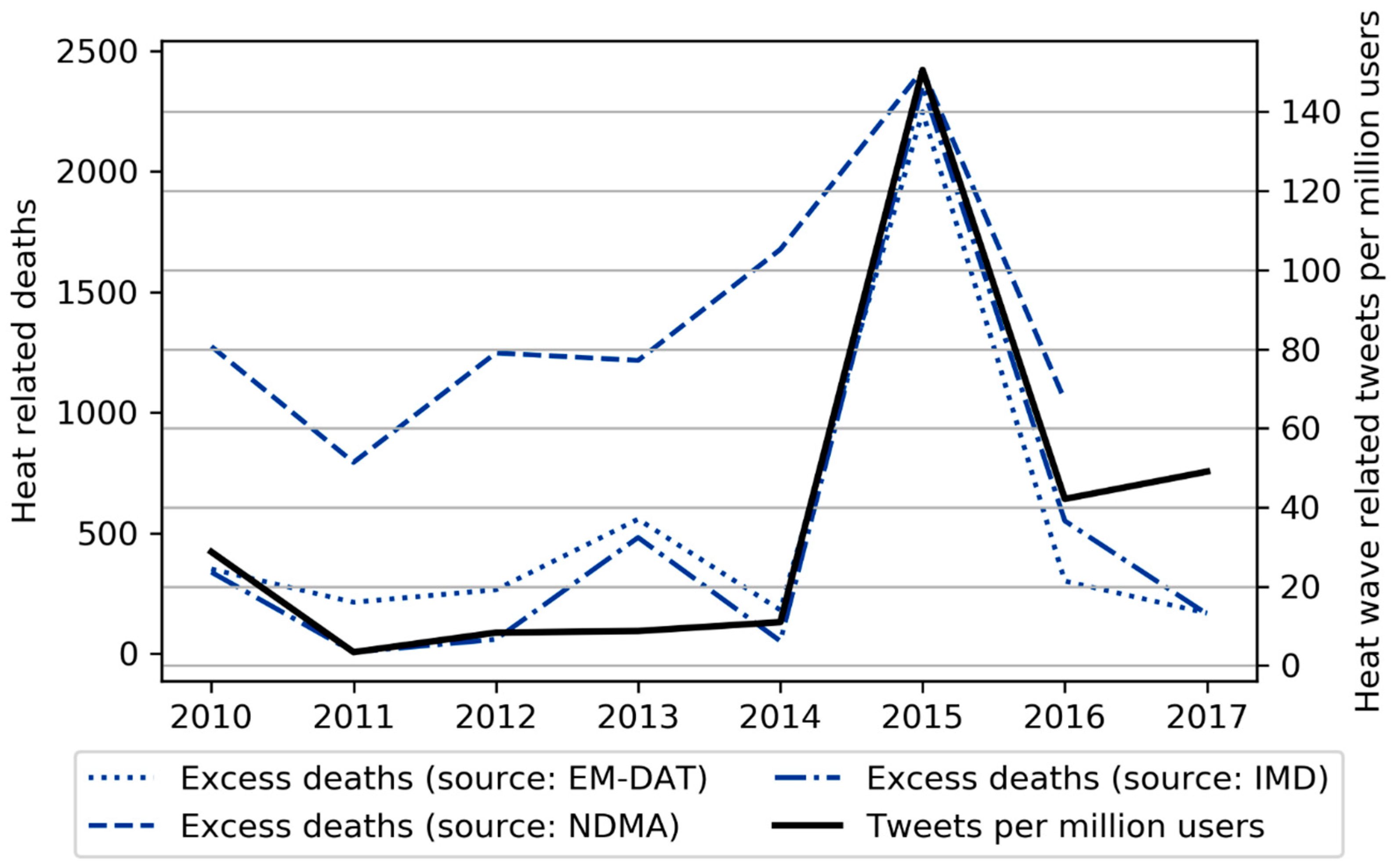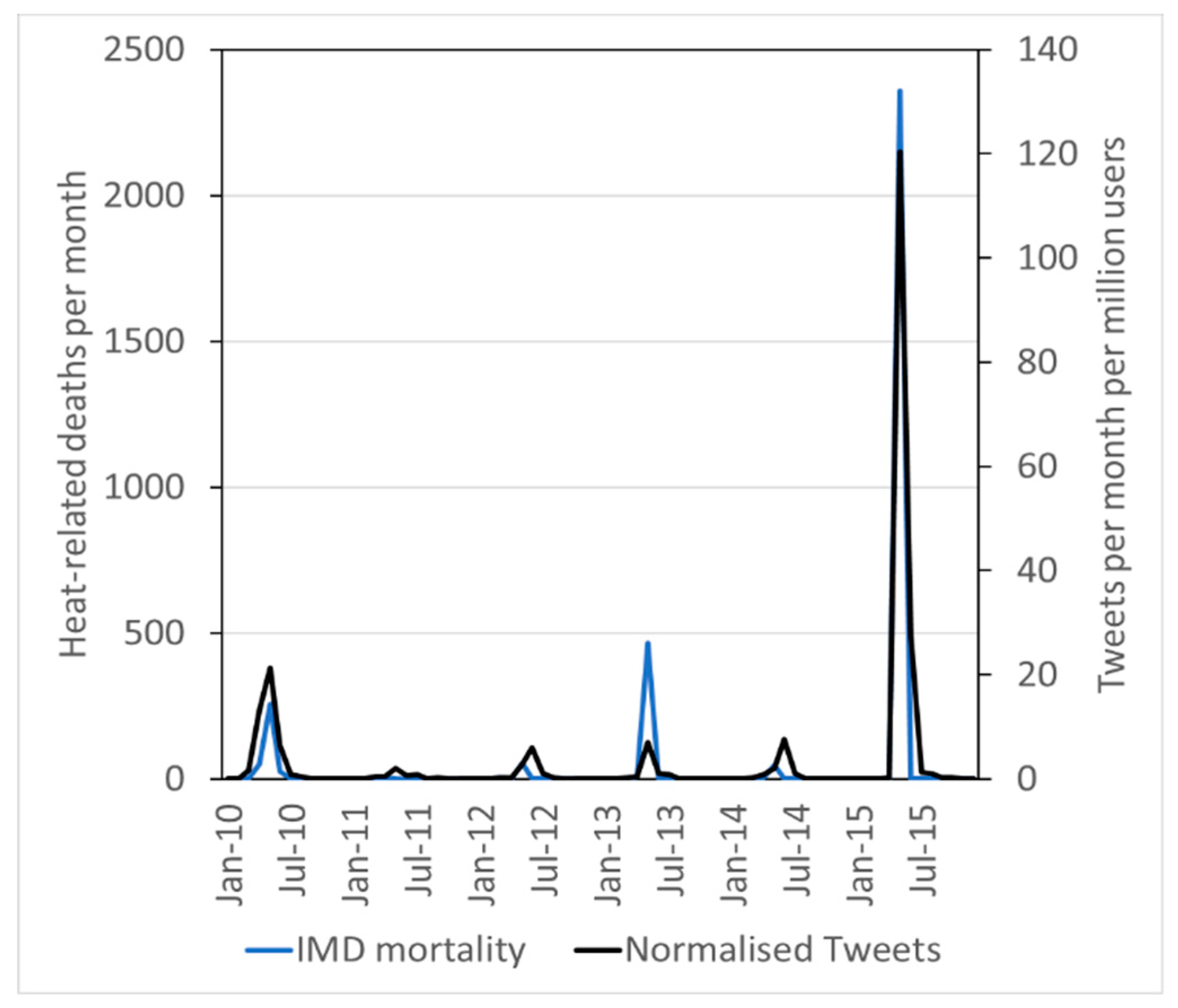1. Introduction
Heat waves are amongst the deadliest of natural hazards [
1,
2,
3]. The European heat wave during the summer of 2003 resulted in 22,000 to 70,000 excess deaths [
4], while the Russian heat wave of 2010 caused 56,000 [
5]. The duration, frequency, intensity and extent of heat waves has also increased since the end of 20th century, and climate models project this will continue with global warming in the near future [
6,
7,
8]. Heat waves are also expected to be exacerbated by other global trends like increasing urbanization [
9,
10,
11], and will impact human health, as well as ecosystems, economy, electricity and water consumption [
12].
To ensure consistent and comparable studies across institutions, countries, and disciplines, a common definition of a heat wave is necessary. The Glossary of Meteorology (GoM) formally defines a heat wave as “a period of abnormally and uncomfortably hot and usually humid weather” [
13]. Whilst a widely accepted definition, it is ambiguous in the absence of quantitative guidelines. This is reflected in the great range of heat wave definitions employed in the literature, which can differ in terms of metrics (e.g., maximum temperature, minimum temperature, mean temperature, apparent temperature), selected threshold that needs to be exceeded (e.g., an absolute threshold, a percentile, or a an anomaly from the climatological mean), or duration of the exceptional conditions (usually ranging from 2 to 5 days at least) [
14]. Numerous researchers have attempted to organise the proposed definitions [
14,
15,
16,
17,
18,
19], but a universal solution remains elusive. One reason is that, looking at the GoM definition, it is relatively easy to quantify the abnormality of temperature and humidity, but the quantification of discomfort for the population is a much harder problem.
Critical thresholds to identify heat waves are often selected through regression analysis of the temperature-mortality relationship [
19,
20,
21,
22,
23,
24,
25,
26,
27,
28,
29,
30,
31,
32]. However, there are practical challenges that limit this approach as a universal solution. For example, the relationship between temperature metrics and mortality has been shown to vary geographically, with socioeconomic or demographic factors, mortality and morbidity data are sensitive, not widely available, and challenging to obtain, and the death toll from heat events can be significantly under- or mis-reported (particularly in developing countries).
This work proposes a very different impact-led approach to identify heat waves using Twitter. Billions of people now use social media to discuss significant world events, and Twitter, with its concise 140-character limit, is regarded as a de-facto tool for mining “what’s happening now” [
33]. This recognition has seen researchers use Twitter for event detection in the context of breaking news [
34,
35], music events [
36], forest fires [
37], earthquakes [
38], and flu outbreaks [
39]. In previous studies, Twitter has been used to identify heat-risk, but only at local scale, for a short time span and without considering impact on population mortality [
40]. Our study is the first to use the widespread availability of Twitter data at large spatial and temporal scales, thus enabling to compare time series with heat-related mortality.
Our study specifically considers Twitter posts (tweets) containing heat wave related phrases, to identify heat waves in India. The choice of India as a case study is due to: (1) India being a heavily populated country (1.34 billion in 2016) [
41]; (2) extreme heat is a very prominent (and growing) natural hazard in the country [
22,
42,
43,
44,
45]; (3) India is a developing country and access to heat-related mortality data is difficult and uncertain, due to significant under-reporting of death or mis-attribution of causes; and (4) English is widely used for social media.
The first question we address is whether Twitter data are better than climate indicators at detecting heat effects on public health, specifically looking at heat-related mortality. After confirming that Twitter data is strongly correlated with heat-related mortality, we examine the differences in heat-wave identification between Twitter and climate data. This step is pursued because we anticipate that Twitter cannot be used for forecasting (and hence warning), which must be informed by meteorological indicators. Hence, a thorough understanding of their similarities and differences is required.
4. Discussion
At first, we look at the tweets containing the phrases “heat wave India” or “heatwave India”. The occurrence of such tweets when no real-time heat wave event happens is rare and isolated in time, while the tweets referring to an event happening in real-time are much more frequent and tend to be re-tweeted multiple times (as shown by the repetition of the same text in multiple tweets). The tweets referring to a real-time heat wave event in India seem to be mostly from news channels or informative webpages (web links in
Table 3), confirming that Twitter can be used as a proxy for news media [
34,
35,
62]. This is also due to the use of the keywords “heat wave” and “heatwave”, which is more formal than other popular expressions. However, when an event occurs, re-tweets, presumably mostly from the general public, constitute the majority of tweets, which suggests that Twitter can capture the reaction of the affected population. The tweet containing the string “Mercury crosses 40-degrees Celsius mark in north India”, shown 6 times in
Table 3, is actually re-tweeted 38 times on the 19th April alone and during the peak of the 2015 heat wave the count of heat wave related tweets reached more than 9000 tweets in one day on the 26th May 2015. Most of the tweets also contain a link to a webpage, where more information about the context can be retrieved.
The number of tweets containing the heat wave related phrases is the main indicator used in this work and is scaled by the number of active Twitter users over time to account for the different tweeting base. The number of users active worldwide is used because we do not limit the origin of tweets geographically. Twitter is used by around 30 million people in India, about 2.2% of the population [
63]. However, we observed that many of the tweets are from media sources and other informative channels, which report significant events in the whole country. Furthermore, it is reasonable to assume that Twitter users are concentrated in cities, where about 40% of the Indian population lives, thus making the tweets relevant for a larger share of the population. Even after being scaled by the number of users, the number of tweets per day have an power law behaviour, probably due to the occurrence of re-tweets and strongly non-linear popularity dynamics [
64,
65] (
Figure 3 and
Figure 4). This might be one of the reasons why annual Twitter data correlate better than temperature indicators with mortality data, suggesting that heat related mortality could have an exponential behaviour, as no significant adverse health effects are expected up to certain temperatures and then the impact on health gets exponentially worse for any increase in temperature or heat wave duration [
66,
67,
68].
The comparison with some yearly temperature indicators in
Table 4 and
Table 5 highlights the reason why a simple quantitative definition of heat wave is not easy to find: although temperature is the trigger for heat-related mortality by definition, it is not easy to identify one single indicator that summarises the heat threat to human health, but rather many factors (maximum daily temperature, minimum night temperature, duration of the extreme weather, indoor/outdoor conditions, humidity, adaptation, and more) play a role. While the climatic heat wave definitions try to identify heat waves using a combination of causes (it is hot, thus people feel uncomfortable), the Twitter-based heat wave identification detects heat waves using an effect (people feel uncomfortable, thus they tweet about it), which makes the nature of the datasets very different. For this reason, it is expected that the tweet indicator implicitly takes into consideration a multitude of complex effects (e.g., adaptation—people start tweeting less about heat wave as they get adapted to certain heat conditions).
The strong correlation between the number of tweets per million users and the number of heat-related deaths holds at monthly scale as well, suggesting that the relationship is strong at finer temporal scale as well.
Repeating the analysis at regional level on the two states of Andhra Pradesh and Telangana confirms the good ability of Twitter to capture the consequences of heat waves, in this case represented by heat-related mortality. In particular, a very high Pearson correlation coefficient is observed, which may be skewed by the 2015 event, but a high Spearman’s ranking coefficient is observed as well, less affected by outliers. However, a better performance of climatic indicators is observed at regional level, in particular of the HI indicator, which seems to capture well the causality of heat waves and their consequences in the studied regions. Indeed, the two most affected states are geographically proximal, as shown in
Figure 2, thus the climatic dynamics causing mortal heat waves are similar and more uniform, therefore easier to summarise in one climatic indicator. The South-East of India is more tropical and humid than other heatwave-prone states like Maharashtra, Madhya Pradesh, Uttar Pradesh or Gujarat. This means that the Heat Index, considering humidity as well as temperature, does well for Andhra Pradesh and Telangana, but is not able to capture all the different climatic dynamics causing uncomfortably hot conditions in India. Twitter, instead, seems to be able to capture heat-related mortality trends particularly well at medium-large scales, and therefore its added values lies in particular at larger scales.
Twitter-based heat wave identification shows very different characteristics compared to the climatic heat wave definitions. To start, notice the ratio between heat wave days and total days (
Table 9): it is striking that the climatic heat wave definitions identify a heat wave occurring in the Indian subcontinent almost 2 days out of 3, while Twitter identifies only 1 out of 3. Although they look like high figures, there are two aspects that need to be considered: (1) in this work a day is considered as a heat wave day if even only 1 location in India, a country of 3.3 million km
2, is experiencing heat wave conditions; (2) all the climatic definitions are based on climatological statistics (mean or percentiles) that are calculated over the previous 30-year period and are hence not adjusted to warming in current climate. Several studies have already observed climatic changes on the Indian climate, with increases in mean and extreme temperatures [
69,
70], but also an increase in heat wave frequency [
44,
45] and our results are consistent with this trend. However, it is still noteworthy that Twitter identifies only around half the heat wave days compared to climatic definitions (
Table 9). This suggests that, while climatic definitions are more conservative, which is a good characteristic for forecasts and warnings (i.e., it is better to have a false alarm than a missed warning), Twitter can better identify the days that are uncomfortable to the population. It must also be considered that we used an empirical two-tweet threshold for the binary Twitter time series: if we used a higher threshold, it would have resulted in an even larger difference between Twitter heat wave identification and climatic heat wave definitions.
Finally, four different climatic heat wave definitions are compared. The definition by IMD has the best hit rate (and complementarily the lowest miss rate). The T95 definition and the EHF definitions have a lower bias (−11% and −12% respectively, compared to IMD), resulting in a lower false alarm rate (−18% and −20% respectively) and higher percentage correct value (+8% and +10% respectively), which denotes less over-estimation of heat wave days, but have a lower hit rate (−3% and −2% respectively), which denotes less precision. The differences between the T95 and the EHF scores are minimal, but the EHF bias is slightly lower (−2%), suggesting that considering cumulative short-term effects and seasonal adaptation has a small, but observable effect. Finally, the HI95 definition, based on the Heat Index and thus corrected for humidity performs a little worse, having both high bias and low hit rate. The reason why the Heat Index is not performing as well as other indices is due to the fact that heat waves occur during the dry season in India, when humidity is low. Our results provide confidence in the IMD definition, which is operationally used to issue warnings. The high bias shows that, although lacking some precision, the definition is conservative and issues warnings in most potentially dangerous situations, while the high hit rate suggests precision in identifying heat waves in the Indian climate.
However, it is clear that, despite the differences between them, the climate-based definitions produce results more similar to each other than the heat wave identification method based on Twitter. The conservative nature of the climatic heat wave definitions, the possibility to be applied to future weather forecasts, and the availability of weather data at fine spatio-temporal scale makes the use of climatic heat wave definitions particularly well-suited to issue warnings and forecasts. Additionally, the availability of long time series of weather data allows the use of climate-based definitions when considering heat wave trends and climate change. However, Twitter showed significantly better performance in estimating heat related mortality that is not addressed by climatic heat wave definitions. More complex heat wave definitions considering climatic, socioeconomic and demographic factors could have performed better in capturing heat-related mortality, but it would reinforce the concept that heat-related mortality is not captured by any simple climatic indicator, but by a complex combination of factors. The Twitter signal and the climatic definitions can, therefore, be seen as complementary to one another.
The presented work is the first analysing the use of Twitter for heat wave identification at large geographical scale and as such it is more of a proof of concept rather than an exhaustive analysis of the methodology’s advantages and disadvantages. India has been selected as a case study as it is a large developing country strongly affected by heat waves, but only limited and uncertain data was available for the analysis. Following work will need to verify how Twitter works to identify heat waves in different contexts and with more data, maybe using other languages than English. The use of Twitter data to identify heat waves is used as a proxy for heat wave mortality and morbidity, and as such it has a limitations: (1) only a part of the population uses Twitter and usually not the most affected portion (elderly, infants, homeless); (2) the selected keywords do not capture all the tweets about heat waves and not all the identified tweets are indeed about real time heat waves; (3) social media data is affected by popularity of certain topics and complex social dynamics, which may vary the frequency of heat wave related tweets independently on the heat wave occurrence. However, in spite of these approximations the proxy still shows a significant ability to identify dangerous heat wave events and therefore can be very useful.
A real-time tracking of heat wave related tweets can be used to identify real-time discomfort conditions, prioritising any response in space and time. This has already been used successfully for earthquake response for example [
38], and our results suggest that a similar approach could be used to identify dangerous heat waves in real time as well. Additionally, heat wave related tweets can also be used as a time series of past heat waves, identifying impactful events to improve understanding of event drivers [
71] and facilitate targeted adaptation [
72]. This would be particularly, useful in developing countries where mortality data are scarce, difficult to access, and very uncertain, and for studies at larger scales. Indeed, one of the biggest limitations of heat wave impact studies so far is that they usually cannot address large (national/international) scales, as mortality data are available only at hospital/community level. Twitter data could help fill this gap in research.
